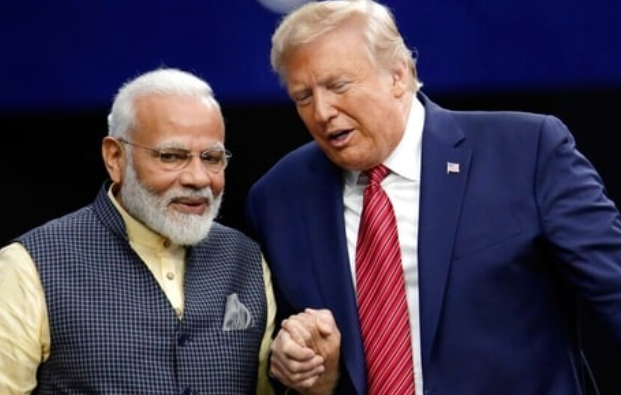
On August 7, 2025, the United States announced a sweeping 25% import tariff on all Indian goods entering the American market—without any exemptions or waivers. The move is expected to severely impact India's export sector, affecting products worth over $25 billion. Essential categories like pharmaceuticals, mobile phones, petroleum products, diesel, and electronic items will now become significantly more expensive for American buyers. But why has this drastic measure been taken, and what will be its long-term implications for India? A detailed report by the Global Trade Research Initiative (GTRI) sheds light on this alarming development.
What Has Happened?
In an unexpected move, the Trump administration declared that from August 7 onwards, every product coming from India into the U.S. will be subjected to a 25% tariff. This includes critical sectors such as:
Medicines and pharmaceutical products
Smartphones and consumer electronics
Petroleum and refined fuels like diesel
Other high-volume industrial and tech exports
What’s particularly shocking is that India has not been granted any preferential treatment or product-specific exemptions—something that countries like China and Vietnam have received in certain categories.
Who Is GTRI and Why Their Report Matters
The Global Trade Research Initiative (GTRI) is an independent research body that analyzes global trade dynamics and tariff policies. Its insights are widely used by governments, the media, and business leaders to make informed decisions about international trade strategies. GTRI not only highlights the immediate impact of such policy decisions but also outlines which sectors stand to lose or gain from these actions.
According to GTRI’s latest findings, this is one of the harshest trade decisions ever made by the U.S. against a key strategic trade partner like India. GTRI estimates that India annually exports over $80 billion worth of goods to the United States, and this new tariff regime could result in at least a 3% decline in exports—equating to a loss of nearly $25 billion or ₹2 lakh crore.
Sector-wise Impact
Some sectors will be more heavily affected than others:
Petroleum Products: India exported around $4.1 billion worth of petroleum goods to the U.S. in FY2025.
Smartphones and Electronics: Exports in this segment could see a blow of around $10.9 billion.
Pharmaceuticals: With a value of $9.8 billion in exports, the pharma sector will also be hit hard.
Many of these sectors rely on imported components for production. With added U.S. tariffs, overall production and selling costs will go up, making Indian products less competitive in the global market.
Why India Is Being Targeted
GTRI argues that this is not just an economic decision—it’s a geopolitical move. The United States, under Trump’s leadership, appears to be pressuring India to fall in line with Washington's broader foreign policy goals. Specifically, the U.S. wants India to:
Comply with American trade expectations
Distance itself from trade and energy deals with Russia
India’s continued purchase of Russian oil despite Western sanctions has been a major sticking point. According to GTRI, this blanket tariff is Trump’s way of sending a direct message to New Delhi: either align with U.S. strategic interests or face economic consequences.
A Pattern of Trump’s Trade Aggression
This isn’t the first time President Donald Trump has resorted to strong-arm trade tactics. In his previous term, Trump implemented aggressive tariff policies on several countries, including China and members of the European Union. His "America First" policy has often translated into harsh trade restrictions on foreign partners, and India seems to be the latest target in this broader campaign.
What Next for India?
The big question now is whether India should attempt to renegotiate with the U.S. or look to diversify its trade relations with other countries. Experts argue that India should consider strengthening its ties with markets in Southeast Asia, Africa, and Europe to reduce over-dependence on U.S. exports.
For now, though, Indian businesses and policymakers are left to grapple with the immediate impact of the new tariffs—and the broader message they convey about U.S.-India relations under Trump’s renewed leadership.
Disclaimer:
The information provided in this article is based on publicly available reports and independent research, including findings from the Global Trade Research Initiative (GTRI). This blog is intended for informational purposes only and does not constitute financial, trade, or political advice. Readers are advised to consult official government sources or trade experts for specific guidance related to international trade policies or business decisions.




